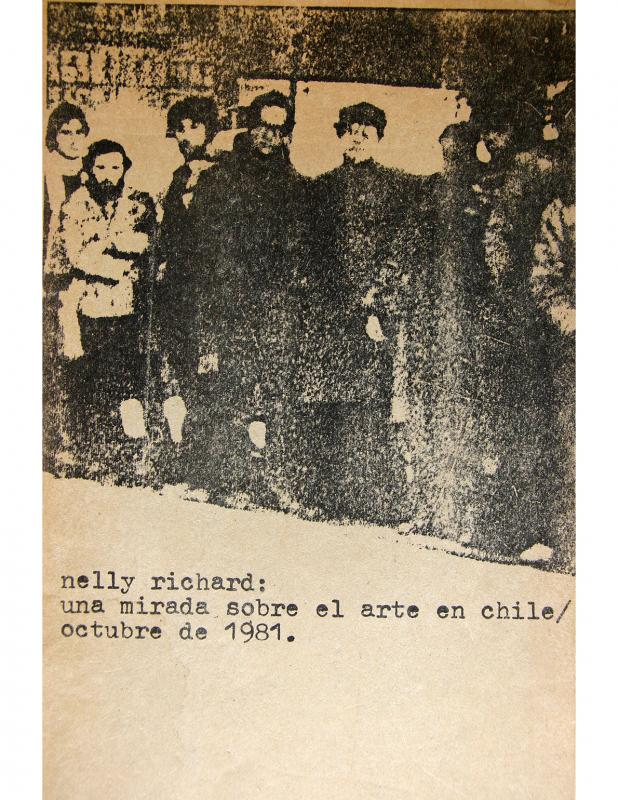“El arte como afirmación” (Art as Affirmation) is a detailed response provided by the art historians Milan Ivelic (b. 1935) and Gaspar Galaz (b. 1941) to the objections raised by the art historian Isabel Cruz (b. 1946) to their first book on the history of Chilean painting. Her critique was published in El Mercurio, a national newspaper in Chile that supported the 1973 military coup d’état and represented the official government view during the dictatorship of General Pinochet. Ivelic and Galaz refer to Cruz’s text as an “article”; but the quotations they select imply a critical condemnation of a conservative interpretation of the history of not just art. Prior to their response to Cruz, the authors published the text “Galaz-Ivelic responden” [see the ICAA Digital Archive (doc. no. 731672)] in La Separata (1981–83), a reply to the critical review by the theorist Nelly Richard titled “La pintura en Chile de Galaz e Ivelic: una instancia redefinitoria para el arte chileno” (doc. no. 731869) involving a different approach to the one taken by Cruz. This debate helps to understand the different, sometimes conflicting, points of view held by different people on the historiography of art. Ivelic and Galaz opt for an expansive, albeit general, view of the aesthetic, historical, and sociological factors that might provide a temporary complex and diachronic result. Richard’s approach is synchronic and is expressed in terms of specific problems that make it possible to read the works in their context. Her perspective is apparent in “Una mirada sobre el arte en Chile” (1981) (doc. no. 730121) and her book Margins and Institutions. Art in Chile Since 1973 (1986), in which she coined the term Escena de Avanzada.
The work of Milan Ivelic and Gaspar Galaz is very important to the visual arts in Chile, since their publications established a narrative about the history of art in the country. In 1983 they adapted their book into the television program Demoliendo el muro (Demolishing the Wall), in which they played the role of animators; taking a pedagogical approach, they sought to reach out to the audience by breaking down the walls between art and the people. The show ran for two seasons, one in the 1980s and the other in 1994. Then, in 1988, they published Chile, Arte Actual (Chile: Contemporary Art), an innovative historiographic book about Chilean art in which they distanced themselves from the traditional category of “painting” they had challenged in their first book. Both authors are the main promoters and communicators of a unifying and comprehensive narrative about Chilean art; their books have become essential reading for any research into the history of that period. [On this subject, see this chapter from their book: “La ampliación del espacio crítico” (doc. no. 734883).]




